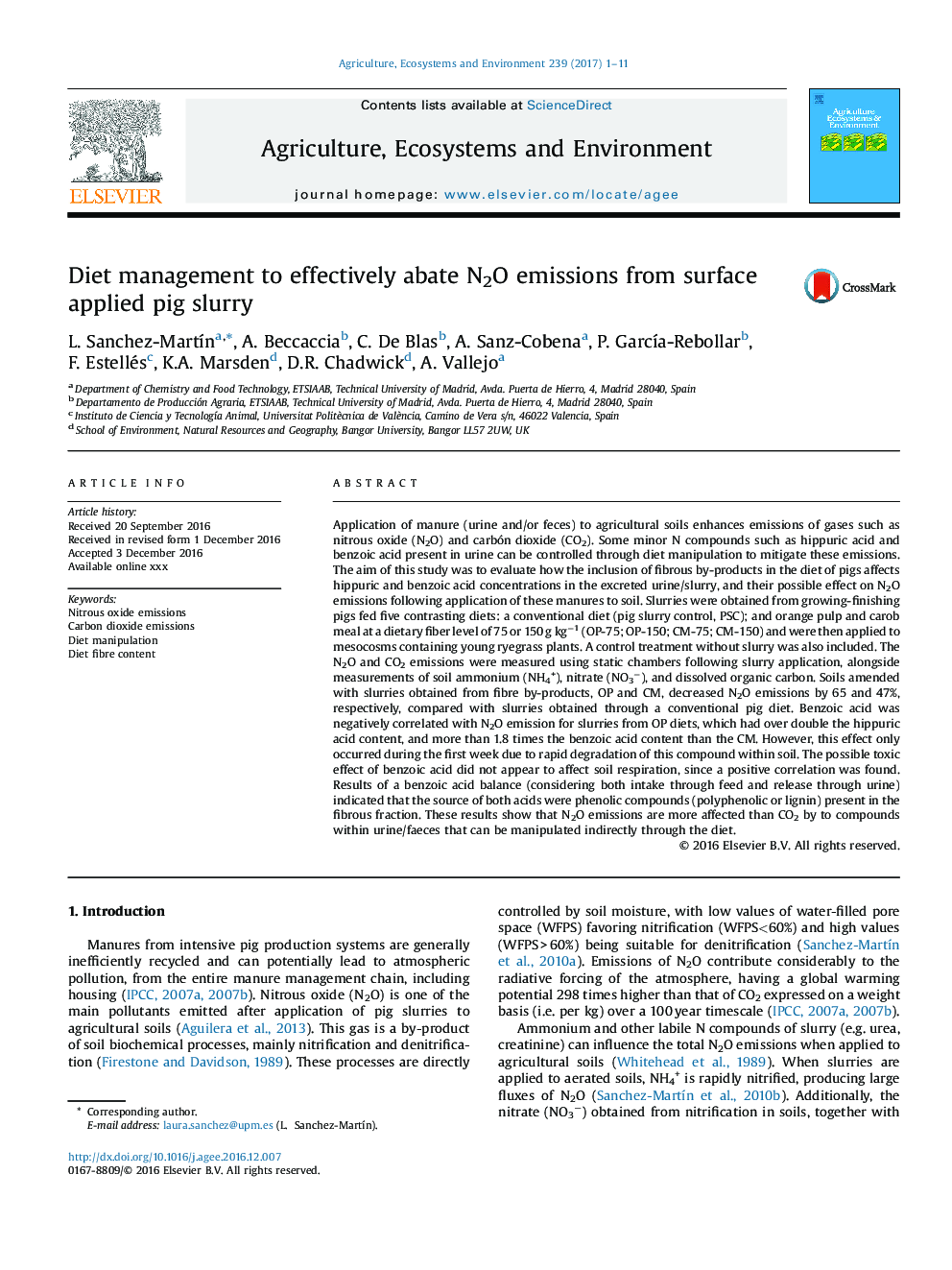| کد مقاله | کد نشریه | سال انتشار | مقاله انگلیسی | نسخه تمام متن |
|---|---|---|---|---|
| 5537907 | 1552013 | 2017 | 11 صفحه PDF | دانلود رایگان |
عنوان انگلیسی مقاله ISI
Diet management to effectively abate N2O emissions from surface applied pig slurry
دانلود مقاله + سفارش ترجمه
دانلود مقاله ISI انگلیسی
رایگان برای ایرانیان
کلمات کلیدی
موضوعات مرتبط
علوم زیستی و بیوفناوری
علوم کشاورزی و بیولوژیک
علوم زراعت و اصلاح نباتات
پیش نمایش صفحه اول مقاله

چکیده انگلیسی
Application of manure (urine and/or feces) to agricultural soils enhances emissions of gases such as nitrous oxide (N2O) and carbón dioxide (CO2). Some minor N compounds such as hippuric acid and benzoic acid present in urine can be controlled through diet manipulation to mitigate these emissions. The aim of this study was to evaluate how the inclusion of fibrous by-products in the diet of pigs affects hippuric and benzoic acid concentrations in the excreted urine/slurry, and their possible effect on N2O emissions following application of these manures to soil. Slurries were obtained from growing-finishing pigs fed five contrasting diets: a conventional diet (pig slurry control, PSC); and orange pulp and carob meal at a dietary fiber level of 75 or 150Â g kgâ1 (OP-75; OP-150; CM-75; CM-150) and were then applied to mesocosms containing young ryegrass plants. A control treatment without slurry was also included. The N2O and CO2 emissions were measured using static chambers following slurry application, alongside measurements of soil ammonium (NH4+), nitrate (NO3â), and dissolved organic carbon. Soils amended with slurries obtained from fibre by-products, OP and CM, decreased N2O emissions by 65 and 47%, respectively, compared with slurries obtained through a conventional pig diet. Benzoic acid was negatively correlated with N2O emission for slurries from OP diets, which had over double the hippuric acid content, and more than 1.8 times the benzoic acid content than the CM. However, this effect only occurred during the first week due to rapid degradation of this compound within soil. The possible toxic effect of benzoic acid did not appear to affect soil respiration, since a positive correlation was found. Results of a benzoic acid balance (considering both intake through feed and release through urine) indicated that the source of both acids were phenolic compounds (polyphenolic or lignin) present in the fibrous fraction. These results show that N2O emissions are more affected than CO2 by to compounds within urine/faeces that can be manipulated indirectly through the diet.
ناشر
Database: Elsevier - ScienceDirect (ساینس دایرکت)
Journal: Agriculture, Ecosystems & Environment - Volume 239, 15 February 2017, Pages 1-11
Journal: Agriculture, Ecosystems & Environment - Volume 239, 15 February 2017, Pages 1-11
نویسندگان
L. Sanchez-MartÃn, A. Beccaccia, C. De Blas, A. Sanz-Cobena, P. GarcÃa-Rebollar, F. Estellés, K.A. Marsden, D.R. Chadwick, A. Vallejo,